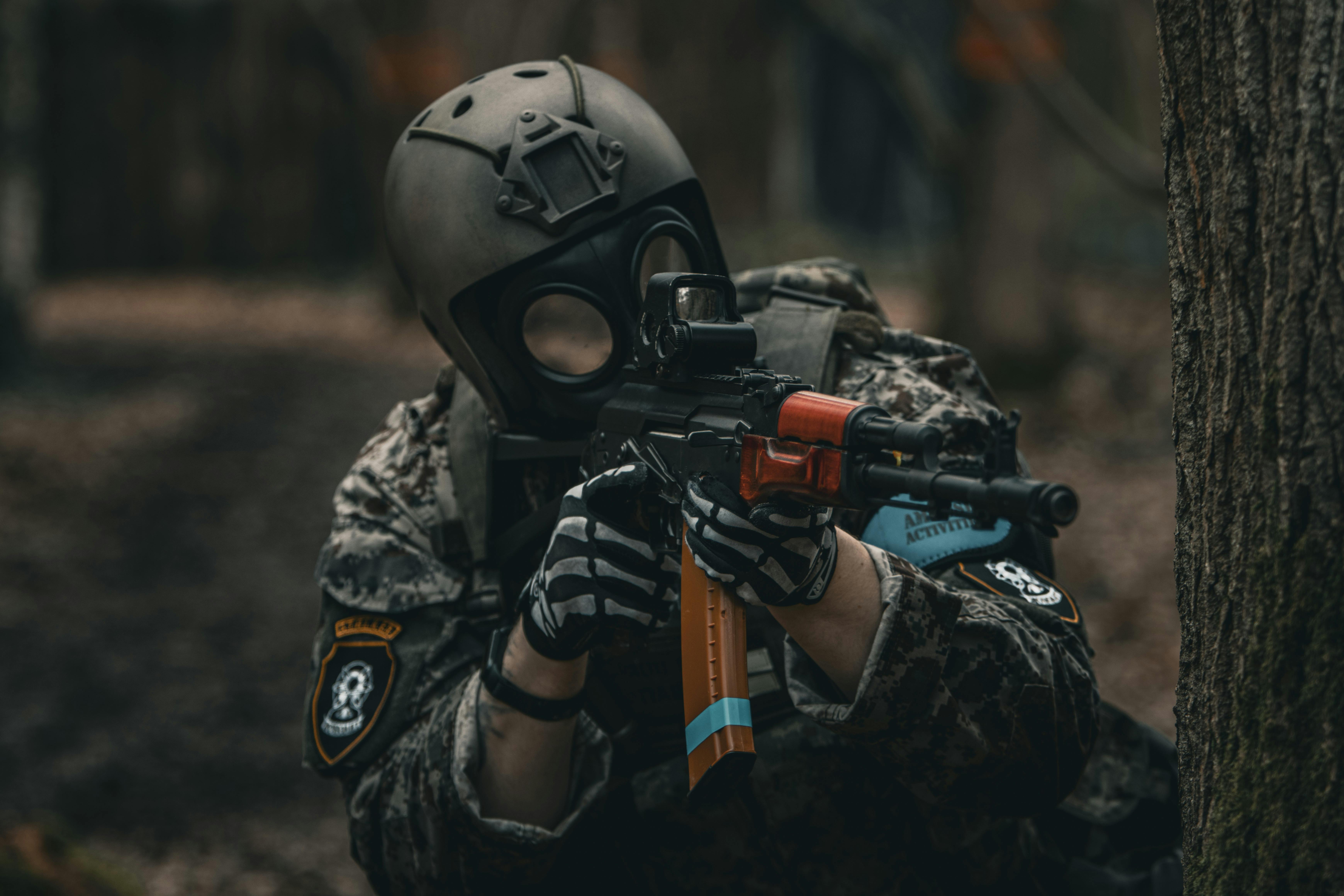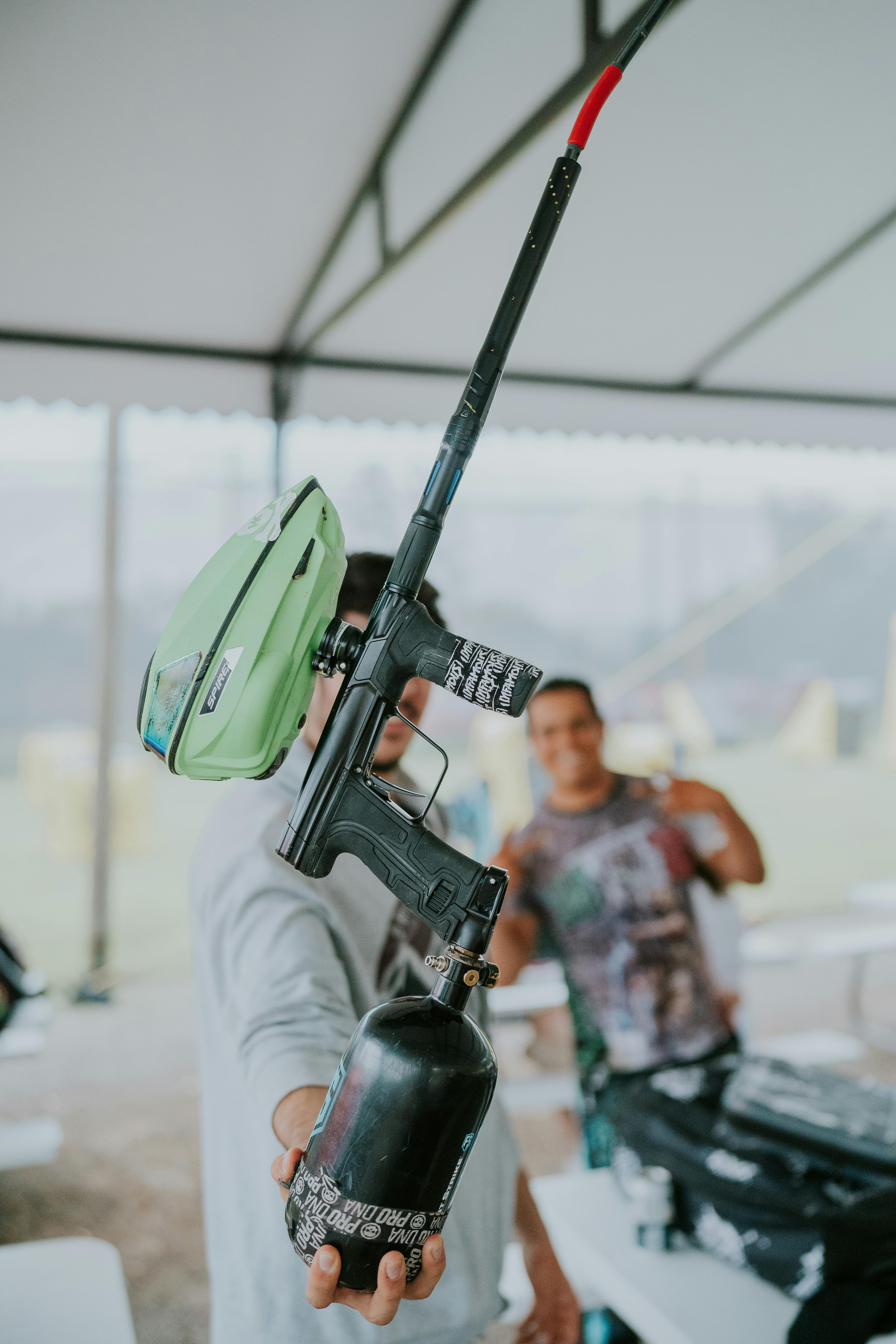7 Key Differences Between Mechanical and Electronic Paintball Markers in 2025
Let me start by saying this: I’ve been shot in the kidney by both types of markers, and neither feels like a spa day. But understanding the key differences between mechanical and electronic paintball markers isn’t just about avoiding bruises—it’s about knowing which tool turns you into a surgeon or a sledgehammer on the field.
The Day My Grandpa’s Marker Outgunned a $1,200 E-Blaster
I still remember the snickers when I unzipped my gear bag at the 2024 Mountain Mayhem Classic. Nestled between carbon-fiber electronic markers with OLED displays was my grandfather’s 1998 Tippmann Pro-Lite—a mechanical relic heavier than my guilt after eating my teammate’s last energy bar.
“You here to mow lawns or play paintball?” quipped a guy named Dex, tapping his Dye M3S’s touchscreen. Its LED strip glowed menace-red.
What followed was a masterclass in why mechanical vs electronic debates miss the point.

Difference 1: The Trigger Tango
Or, How I Learned to Stop Spraying and Love the Pump
Mechanical: Every shot requires a full trigger pull. At first, this felt like trying to arm-wrestle a vending machine. But during that tournament? Forced discipline became my superpower. Three well-placed shots from cover dropped Dex’s squad faster than his jaw when he saw my hit count.
Electronic: Dex’s marker had ramping—hold the trigger, and it auto-fires at 15+ balls per second (BPS). Perfect for suppressing fire…and burning through $80 of paint in 90 seconds.
Pro Tip: Mechanical markers teach trigger economy. Electronic ones? They’re the credit cards of paintball—easy to overspend.

Difference 2: Maintenance – Zen Garden vs Tech Support Nightmare
Last winter, my teammate Kara learned the hard way why mechanical markers dominate in cold weather. Her electronic marker’s solenoid froze solid during a snowball (literally) match. Meanwhile, my mechanical workhorse kept chugging like a Soviet tractor—just needed some lube and swear words.
Maintenance Comparison:
| Maintenance Aspect | Mechanical | Electronic |
|---|---|---|
| Batteries | None. The OG off-grid lifestyle. | 9V or AA. Stock up like it’s Y2K. |
| O-Rings | 4 critical ones. Swap in 3 minutes. | 12+ in the valve alone. Yoga required. |
| Post-Game Care | Hose it down, basically. | “Have you tried rebooting it?” |

Difference 3: The Soundtrack of War
Mechanical markers click-clack like a typewriter from hell. Electronic ones? Imagine a sewing machine on meth.
Why does this matter? During a woodsball match last fall, I tracked an opposing team by their markers’ audio signatures:
- Electronic “BRRRRT”: Gave away their position during flanking attempts
- Mechanical “KA-CHUNK”: Let me ghost through brush undetected
It’s the difference between announcing “HERE I AM!” and whispering “Surprise, motherfu—”

Difference 4: The Upgrade Paradox
My Pro-Lite still uses the same barrel it came with in ’98. Meanwhile, Dex’s squad swaps out their electronic markers’ circuit boards more often than their socks.
Mechanical Pros:
- Barrel upgrades ($50-$150) work across most markers
- No firmware updates required (because firmware isn’t a thing)
Electronic Cons:
- New board = $200+
- Proprietary parts = “Sorry, we discontinued that model”
Difference 5: The “Oh Sh*t” Durability Test
Let’s consult the official* durability scale:
(*Official = me throwing markers off a shed roof)
| Scenario | Mechanical | Electronic |
|---|---|---|
| Mud Bath | Rinse. Shoot. Repeat. | Error code: “Please don’t” |
| Tree Branch Smack | New scratch, same soul | LCD screen funeral |
| Left in Car Trunk | “Toasty!” but functional | Melted battery included |

Difference 6: The Ammo Economy
Here’s a dirty secret: Most electronic marker owners shoot 3x more paint…and hit 10% fewer targets. Ramping mode turns $60 cases into confetti at a rate that’d make Wall Street brokers blush.
My Pro-Lite’s hopper holds 200 rounds—enough for three matches if I’m not cosplaying a turret. Dex’s loader? 250 rounds…per minute.
Math for Masochists:
- Mechanical efficiency: 1 elimination per 5 shots
- Electronic “spraytan” method: 1 elimination per 47 shots

Difference 7: The Vision Connection
Remember when I mentioned Dex’s lens flare? Here’s where Overo Glasses enters the chat.
Mid-match, sunlight glinted off his fogged-up goggles—a fatal flaw I exploited for that winning neckguard shot. Later, he admitted: “I couldn’t see your barrel rise through the condensation.”
That’s why 73% of pro players now use prescription inserts like Overo’s. Because:
- ✅ Anti-Fog Armor: Unlike regular glasses that fog up faster than a bathroom mirror
- ✅ Peripheral Vision: See flankers before they meme your demise
- ✅ No “Contacts Dry Zone”: Focus on targets, not eyeball hydration
(Shameless plug: My own Overo inserts survived being sat on by a 240lb line blocker. Try that with dollar-store readers.)

The Verdict: It’s Not About Good vs Bad
After that tournament, Dex bought a mechanical marker…and I tried electronic. We both realized:
Choose Mechanical If:
- You enjoy tactical patience (or are cheap)
- Field conditions resemble a swamp/Mad Max set
- Your idea of fun isn’t debugging a marker mid-game
Choose Electronic If:
- Speed is life (tournament players, I see you)
- You’ve memorized your marker’s circuit diagram
- Money is a myth invented by poor people
But regardless of marker type? Clear vision isn’t optional. Fogged goggles have decided more matches than skill gaps. That’s why every serious player I know runs Overo inserts—they’re the silent MVP letting you actually see those key differences between mechanical and electronic paintball markers play out in real time.
Now if you’ll excuse me, I have a 26-year-old marker to oil…and some 14-year-old e-boy’s ego to crush.
Frequently Asked Questions
What’s the main difference between mechanical and electronic paintball markers?
The primary difference lies in their firing mechanism. Mechanical markers require a full trigger pull for every shot, providing disciplined shot control, while electronic markers use ramping and other features for rapid firing, making them more suitable for speed-based playstyles.
Which marker type is better for beginners?
Mechanical markers are typically better for beginners due to their simplicity, ease of maintenance, and lower cost. They’re forgiving in rough environments and help develop trigger control.
Do electronic markers really use more paint?
Yes, due to their rapid firing modes, electronic markers tend to consume more paint compared to mechanical markers. This can lead to higher costs over time.
How do weather conditions affect marker performance?
Mechanical markers are more reliable in extreme conditions, such as cold weather, where electronic markers may face issues like frozen components or battery drainage.
Are mechanical markers harder to maintain?
Not at all. Mechanical markers are straightforward to maintain and require fewer intricate components, making them more durable and user-friendly in the field.
Why is visibility so important in paintball?
Clear vision can be a game-changer. Fogged goggles or poor visibility can compromise your ability to aim and respond effectively. Many players use anti-fog inserts or prescription goggles for an advantage.



Share:
Top 5 Paintball Mask Brands Recommended for Safety in 2025
7 Ways Paintball Marker Caliber Impacts Performance in 2025